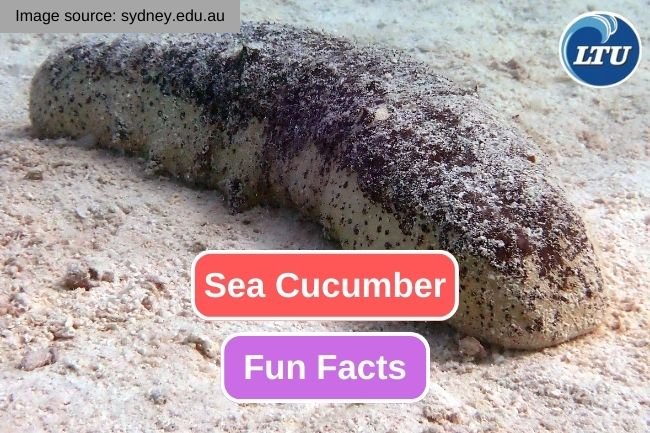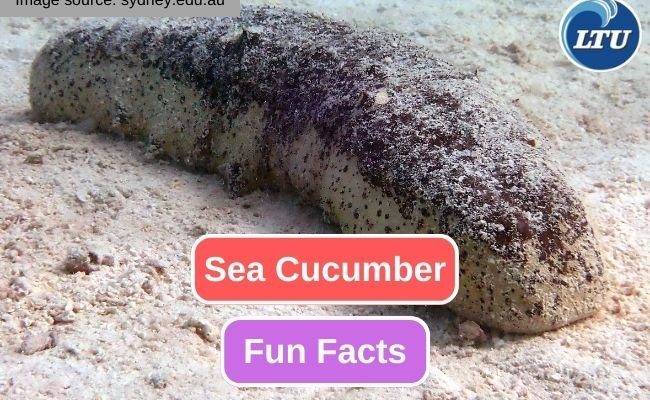
Sea cucumbers are a type of echinoderm, which makes them related to starfish and sea urchins. But unlike their relatives, sea cucumbers have a soft, elongated body that resembles a vegetable—hence their name. They play a crucial role in the ecosystem, acting as nature’s recyclers. So, grab a cup of coffee and let’s dive into the world of these special sea dwellers. Here’s a list of ten cool things you probably didn’t know about sea cucumbers!
1. They’re Master Cleaners of the Ocean Floor
Here’s the thing: Sea cucumbers may look pretty lazy, but they’re incredibly hardworking! They play a vital role in their ecosystems by feeding on detritus—tiny bits of decomposing organic matter on the sea floor. Think of them as vacuum cleaners for the ocean. They swallow sand and mud, extracting nutrients as they go, and then they spit out clean sand. This not only helps maintain a healthy ocean floor but also promotes the growth of new life forms.
In many ways, you can compare them to earthworms on land. Just as earthworms enrich the soil, sea cucumbers help keep marine environments clean and fertile. By breaking down organic materials, they help recycle nutrients that other marine life depends on. So, the next time you see a sea cucumber, remember they’re not just lounging around; they’re doing some serious cleanup!
2. They Can Change Their Shape
You might think of sea cucumbers as plump and soft, but they’ve got another trick up their sleeves (or should I say bodies?). Sea cucumbers can actually change their shape! When threatened, some species can contract their bodies to appear smaller and harder. This helps them avoid predators who might be looking for a meal. It’s like those inflatable toys that can squish down when squeezed.
But that’s not all. Some sea cucumbers can even expel part of their internal organs to distract predators. These organs can regenerate over time, making it a pretty clever way to escape danger. Imagine being able to grow back a part of yourself after a close call!
3. They Have a Unique Defense Mechanism
Speaking of escaping danger, sea cucumbers have a rather unusual defense mechanism. When threatened, many species can eject a sticky substance to ward off attackers. This slime can entangle small fish or distract larger predators, giving the sea cucumber time to make its escape. It’s almost like they have a built-in alarm system!
This ability isn’t just for show; it’s a real lifesaver in the wild. The released substance can even be toxic to certain predators, adding an extra layer of protection. So while they might look soft and squishy, sea cucumbers are far tougher than they appear.
4. They Play a Role in Medicine
While sea cucumbers might not be household names in the medical world, they’re gaining attention for their potential health benefits. These creatures are rich in nutrients, including vitamins, minerals, and even some compounds that may have anti-inflammatory properties. Some cultures have used sea cucumbers in traditional medicines for centuries.
In recent years, researchers have been studying them for possible medical applications, including cancer treatments. Their unique compounds are showing promise in laboratory settings, which is pretty exciting news for sea cucumber fans and health enthusiasts alike. So, who knew these little guys could be making waves in the medical community?
5. They Come in Many Shapes and Sizes
Sea cucumbers aren’t a one-size-fits-all deal; they come in a stunning variety of shapes, sizes, and colors. There are over 1,500 known species, and they can vary from a few inches long to over six feet! Some look like little squishy sausages, while others might resemble a wrinkled hot dog.
Their differences extend beyond just size and shape. Some are brightly colored, blending in with their surroundings, while others are more muted, allowing them to hide from predators. Their diversity is a testament to the adaptability of life in the ocean. It’s like stepping into an underwater art gallery every time you encounter a new sea cucumber species!
6. They Have a Slow Lifestyle
If you think about the ocean’s bustling creatures, sea cucumbers are like the chill, laid-back friends of the deep blue. They have a slow lifestyle, moving at a leisurely pace, often just crawling along the ocean floor. While some sea creatures dart around, sea cucumbers take their time munching on detritus and exploring their surroundings.
This leisurely lifestyle is partly due to their diet. They feed primarily on organic material, which doesn’t require a lot of energy, allowing them to take it slow and easy. Honestly, who wouldn’t want to live life at a snail’s pace in a beautiful underwater world?
7. They’re Crucial for Carbon Cycling
You might not think of sea cucumbers as environmental champions, but they actually play a significant role in carbon cycling. By feeding on organic matter and excreting waste, they help release carbon back into the environment, which is important for maintaining the balance of marine ecosystems.
This process also supports the growth of phytoplankton, which are tiny plants that produce a lot of the Earth’s oxygen. So in a roundabout way, sea cucumbers contribute to the very air we breathe! They may not be the glamorized ocean creatures, but their contributions are absolutely vital to our planet’s health.
8. They’re a Delicacy in Many Cultures
When it comes to food, sea cucumbers might not be everyone’s first choice, but in many cultures, they’re considered a delicacy. In Asian cuisines, particularly in China and Japan, sea cucumbers are prized for their unique texture and potential health benefits.
They’re often used in soups or stir-fries and can be found in high-end restaurants specializing in seafood. The interesting part? They can be quite expensive! Some species can be sold for a hefty price tag, making them a luxury item in culinary circles. So next time you’re enjoying a seafood dish, remember that a sea cucumber could be on the menu!
9. They Reproduce in a Fascinating Way
Reproduction for sea cucumbers is pretty intriguing. Most species are capable of both sexual and asexual reproduction. In sexual reproduction, they release sperm and eggs into the water, where fertilization occurs. This can lead to a blast of baby sea cucumbers!
But here’s where it gets even cooler: some species can reproduce asexually by splitting their bodies in two. Each half can then regenerate into a full sea cucumber. It’s like they have their own superpower when it comes to creating new life. This flexibility ensures that even if conditions are tough, they can still thrive and multiply.
10. They’re Key Indicators of Ocean Health
Finally, sea cucumbers are essential indicators of ocean health. Because they are sensitive to changes in their environment, scientists use them to monitor the condition of marine ecosystems. If the population of sea cucumbers begins to decline, it could signal problems like pollution or habitat loss.
By keeping an eye on these creatures, researchers can gain insights into the broader health of our oceans. Like the canary in a coal mine, sea cucumbers can alert us to changes we might otherwise overlook. Their presence or absence can tell a story about the waters they inhabit.
In conclusion, sea cucumbers are far cooler than most people realize. They’re not just squishy blobs on the ocean floor; they play important roles in our ecosystems, offer nutritional benefits, and hold secrets to our ocean’s health. Whether you’re fascinated by their unique abilities or intrigued by their role in the environment, it’s clear that the sea cucumber deserves a little more recognition in the aquatic world. So next time you’re near the ocean, take a moment to appreciate these incredible creatures!

